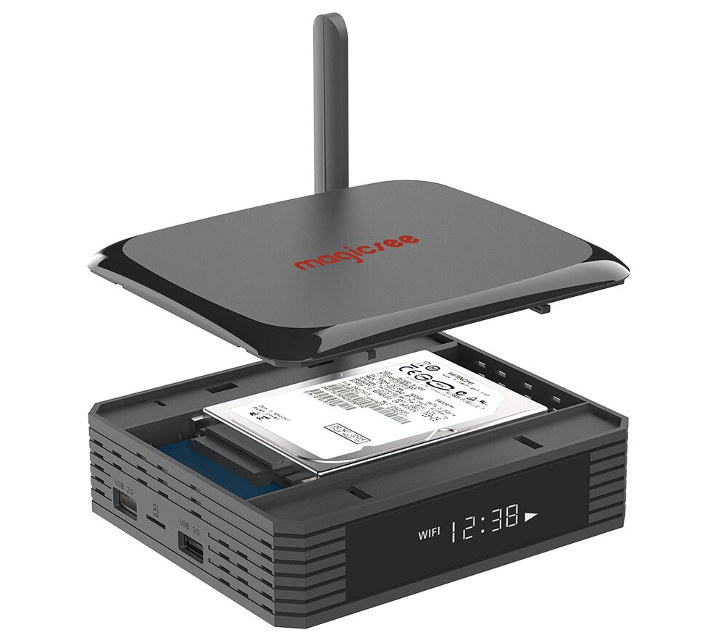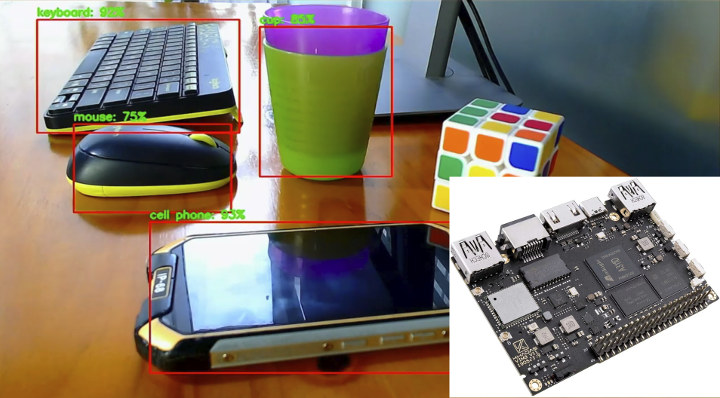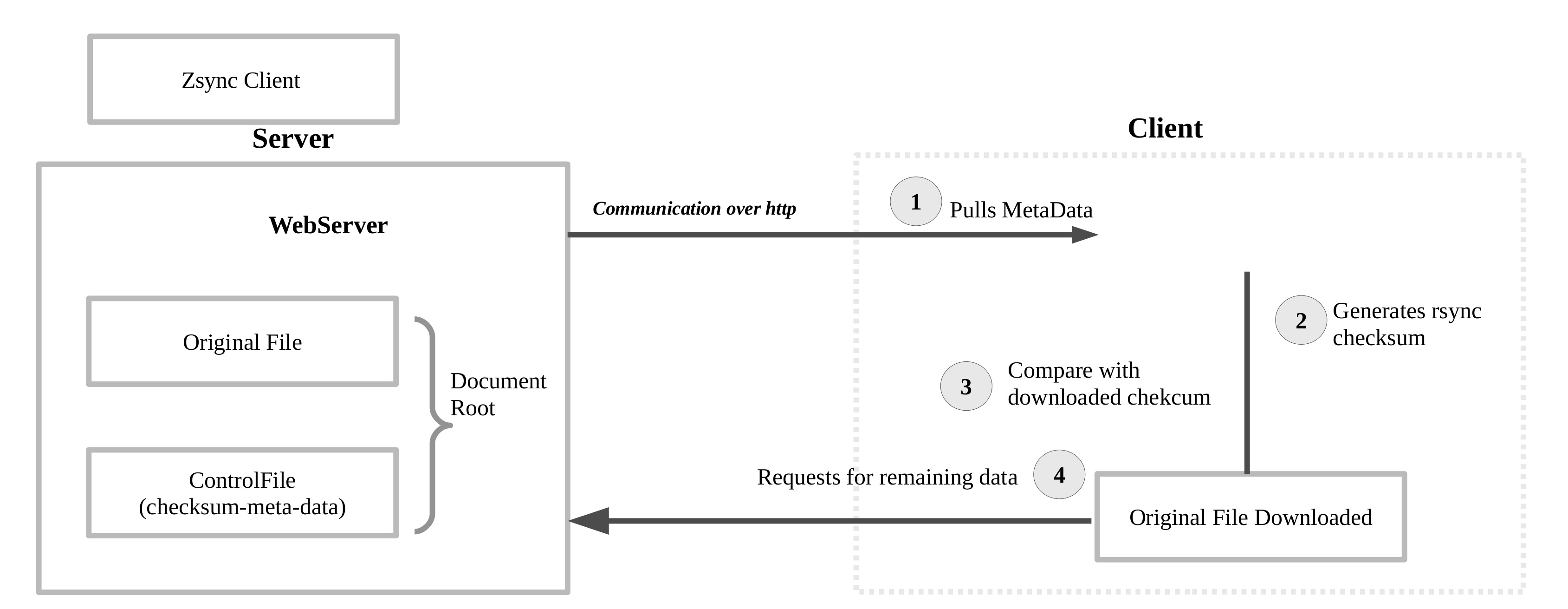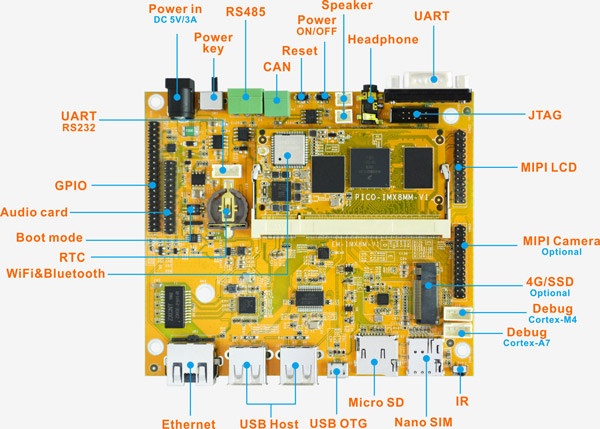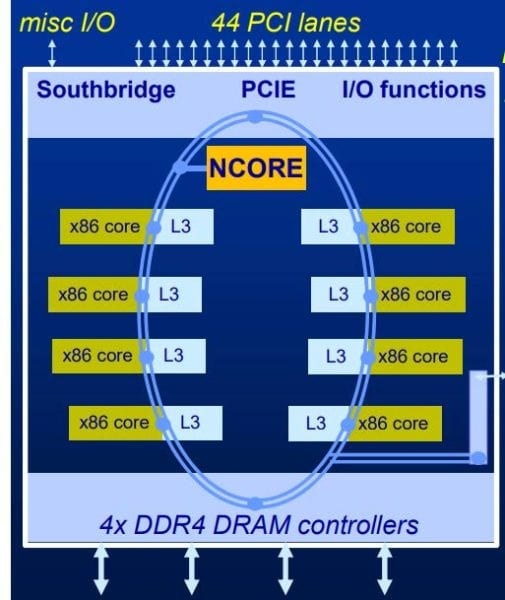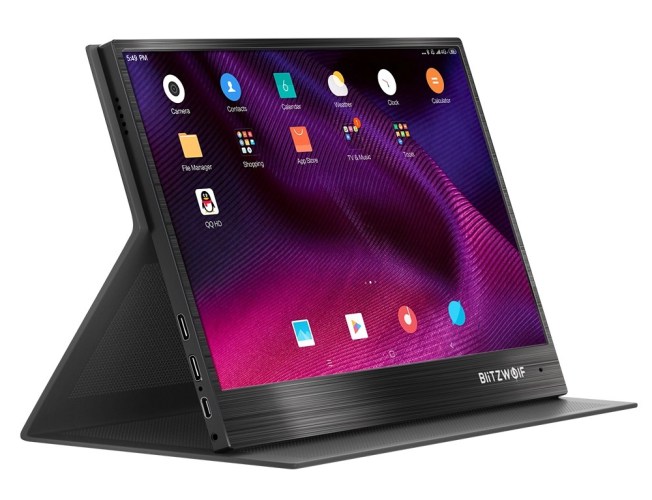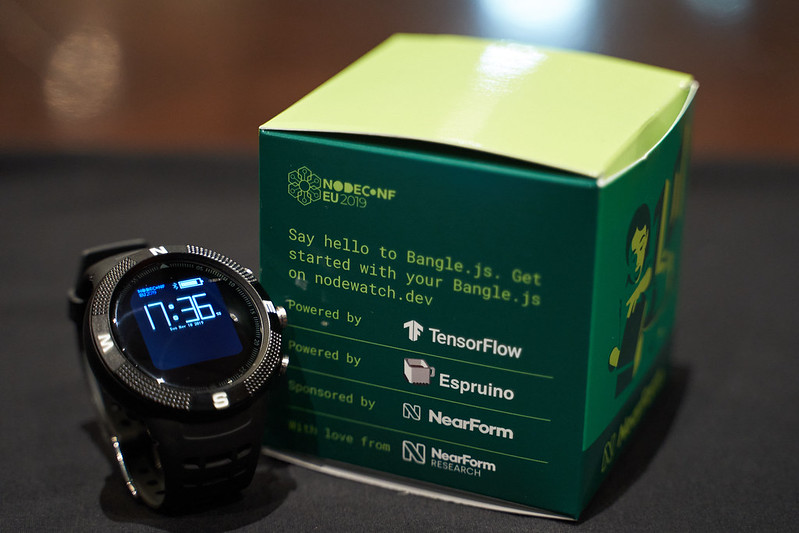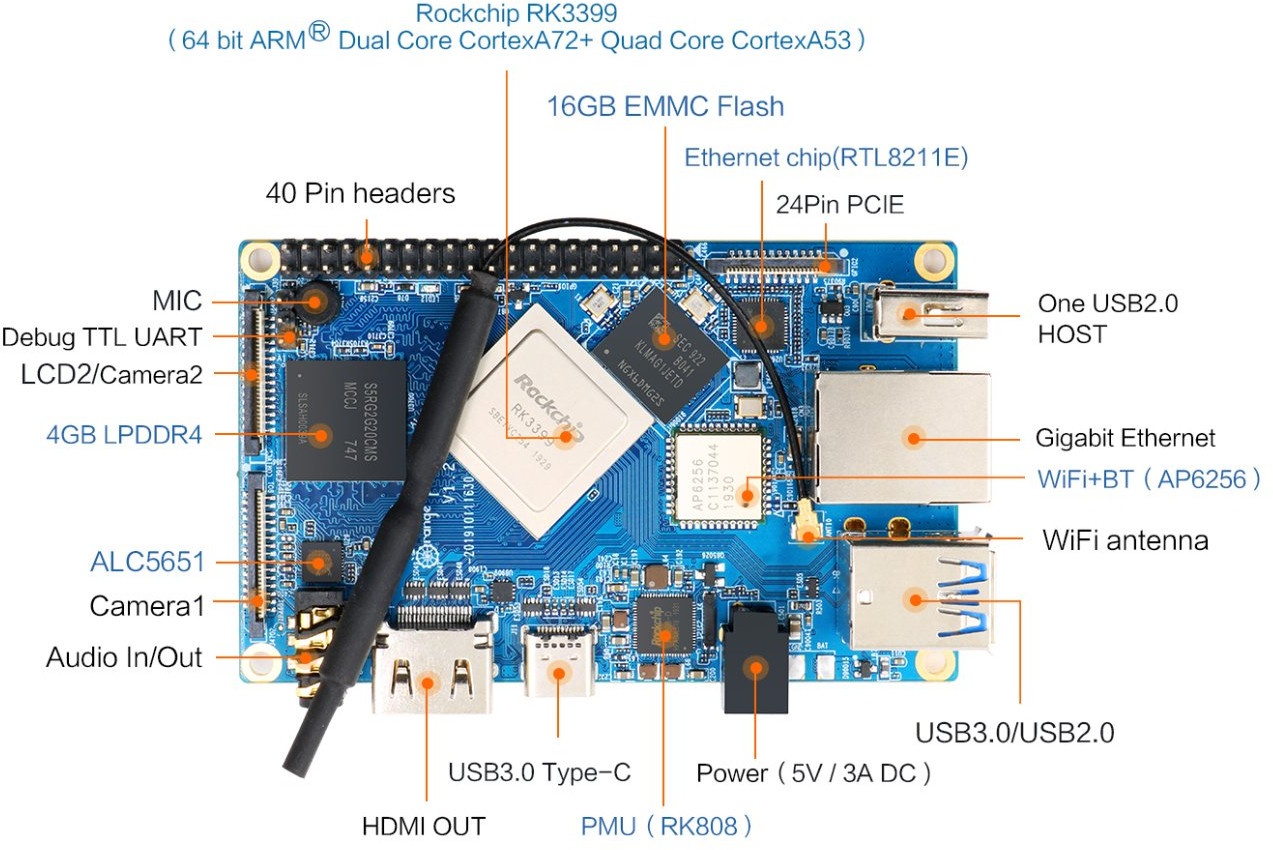Amlogic S905X3 TV boxes have been announced since June. S905X3 is Amlogic’s first Arm Cortex-A55 processor and targets 4K UHD HDR TV boxes. If you plan to play files locally, you may do so from a USB hard drive connected to one of the USB 3.0 or USB 2.0 ports, but Magicsee N5 Plus offers another option thanks to a SATA bay for 2.5″ hard drives or SSD’s. Magicsee N5 Plus specifications: SoC – Amlogic S905X3 quad-core Arm Cortex-A55 processor @ 1.9 GHz with Arm Mali-G31MP2 GPU System Memory – 2GB or 4GB DDR4 Storage – 16GB, 32GB, or 64GB GB eMMC flash, microSD card slot, 2.5″ SATA HDD/SSD bay up to 4TB Video & Audio Output HDMI 2.1 up to 4K @ 60 Hz with HDCP, CEC, HDR 3.5mm AV jack for composite video (480i/576i) and stereo audio Optical S/PDIF Video Playback – 10-bit H.265 up to 8K @ […]
Khadas VIM3 NPU ToolKit Release & Video Demo
Khadas VIM3 board based on Amlogic A311D processor with a 5TOPS Neural-network Processing Unit (NPU) launched last June. We’ve reviewed VIM3 with Android 9 shortly after launch, but until recently it was not possible to leverage the NPU since the software was not quite ready yet. The goods news is that Khadas has now released the NPU toolkit for both VIM3, and the cheaper VIM3L boards. The NPU toolkit contains the following directory: docs – Model conversion documentation acuity-toolkit – Model conversion tools linux_sdk – Linux SDK android_sdk – Android SDK The toolkit works in host PCs running Ubuntu 16.04 or 18.04 with Tensorflow framework, and inference can run on both Linux and Android OS in Khadas VIM3/3L board. It includes an Inception v3 sample with 299×299 sample photos, among other demos. You’ll find documentation to get started with model conversion and inference in Linux on Khadas Wiki. You can […]
Zsync HTTP-based File Transfer Utility Transfers Large Files Efficiently
Zsync is an opensource file transfer utility built on top of rsync algorithm. This helps to download partial/differential files over the HTTP protocol. The utility allows downloading only new parts of a file from a centralized location, where the older version of the file is already within your computer. While rsync is for syncing data from one computer to another, zsync allows file distribution, where the file hosted in a server using any web server can be distributed to many and downloaded seamlessly. How it works The command-line utility will do all the differential calculations in the client, instead of doing it in the server as in rsync. Server metadata will be created only once and stored as part of the control file. And rest of the operations and decision making will be handled by the client-side application. This will reduce the huge processing needed on the server-side, even when […]
Boardcon EM-IMX8M-MINI SBC Drives a MIPI DSI Display via NXP i.MX 8M Mini Processor
We’ve been covered SBC’s and SoM’s from Boardcon for at least 5 years, with our latest article detailing Boardcon Idea3399 SBC powered by Rockchip RK3399 processor, and launched this September. The company has now launched another single board computer with EM-IMX8M-MINI featuring an NXP i.MX 8M Mini system-on-module (SoM) with 2GB LPDDR4, 8GB eMMC flash, and wireless connectivity. The board is designed for a “wide range of multimedia applications” and offers a MIPI DSI interface for LCDs up to 1920×1080 resolution. Boardcon EM-IMX8M-MINI specifications: SOM-IMX8M-MINI SoM (aka PICO-IMX8MM-V1) SoC – NXP i.MX8M Mini Quad with 4x Arm Cortex-A53 @ up to 1.8GHz, Arm an Arm Cortex-M4F real-time microcontroller @ 400MHz, Vivante GCNanoUltra 3D GPU, and Vivante GC320 2D GPU System Memory – 2GB LPDDR4 RAM Storage – 8GB eMMC 5.1 flash, QSPI NOR flash Connectivity – 802.11n WiFi 4 and Bluetooth 4.0 via an Ampak AP6236 module I/Os via 200-pin […]
Centaur Unveils an x86 SoC with Integrated AI Coprocessor
Artificial intelligence is handled at different levels in the ecosystem with ultra-powerful systems in the cloud equipped with dedicated hardware such as FPGA or GPU cards, while on the other side of the spectrum we have Arm or RISC-V based processor with AI accelerator for low power systems like smartphones or battery-powered smart cameras. Centaur Technology aims to provide a solution catering to the middle segment of devices that don’t need ultra-low power consumption, nor the highest possible peak performance, but still require a relatively compact form factor and low costs. Their solution is a still-unnamed octa-core x86 processor featuring Centaur NCORE AI coprocessor. SoC with built-in NPU (Neural-network Processing Unit) is pretty common in the Arm and RISC-V world, but it’s apparently a world’s first in the x86 space since existing solutions are all based on external accelerators. Key features of the Centaur x86 AI processor: x86 microprocessor with […]
BlitzWolf BW-PCM1 is an Inexpensive 11.6″ Portable Display
The BlitzWolf Portable Display The BlitzWolf BW-PCM1 is an 11.6″ portable monitor designed for function and performance. The versatile screen has a number of features that other portable monitors, don’t have. This expanded ability seems to usher in a new era of portable monitors. The Idea Behind the Portable Display The BW-PCM1 was designed to a greater extent to use a gamer’s model for resolution at Full HD for 1920 x 1080 and auto-refresh at a range of 24 – 60 Hz. It is inexpensive and has a number of positive features and some negatives as well. Power Access The screen needs to be plugged into a power source and there is no indication that there will be a battery option. That is not to say never, just at this time there is no battery available for the unit. The BW-PCM1 Cons The display is designed to […]
Bangle.js is an Hackable, Open Source JavaScript and TensorFlow-driven Smartwatch (Crowdfunding)
Espruino brought JavasScript to the Microcontroller, now Bangle.js is bringing Javascript plus TensorFlow Lite to your smartwatch. There has been some movement by some developers that says that JavaScript should be used for everything, even though I find that idea ridiculous, I still find JavaScript a fascinating language. The NeaForm Research team and Gordon Williams (the brain behind Espruino) have all teamed up in launching Bangle.js Smartwatch. Bangle.js isn’t your ordinary smartwatch, at the heart of it is the open-source ecosystem. JavaScript plus TensorFlow Lite and of course, a cool looking Smartwatch is what Bangle.js is offering. Bangle.js was launched at the recently concluded NodeConf EU conference, and the goal is to bootstrap an Open Health Platform hopefully. NodeWatch is the specific implementation of Bangle.js for NodeConf EU 2019, co-developed by Espruino and NearForm Research. This project has the potential to bootstrap a community-driven open health platform where anyone can […]
Orange Pi 4/4B SBC Comes with Rockchip RK3399 SoC, Gyrfalcon 2801S NPU
Shenzhen Xunlong Software’s Orange Pi RK3399 single board computer launched in early 2018 with 2GB RAM for $109, and earlier this year, the company launched an updated version with 4GB RAM and a lower $99.96 price tag. But there are plenty Rockchip RK3399 SBC’s on the market, including FrienglyELEC NanoPi M4 going for $50 and up ($75 with 4GB RAM), and Pine64 RockPro64 board starting at $59.99 with 2GB RAM, and $79.99 with 4GB. So unless you need the extra features (HDMI Input, SATA port, mPCIe socket…) offered by Orange Pi RK3399, other boards may be more competitive. So the company has been working on lowering the cost with a smaller board. Meet Orange Pi 4. They’ve also provided some extra features with a variant of the board called Orange Pi 4B that adds a Gyrfalcon Lightspeeur 2801S AI accelerator chip/NPU. That says a lot that neither Rockchip RK3399Pro SoC […]


